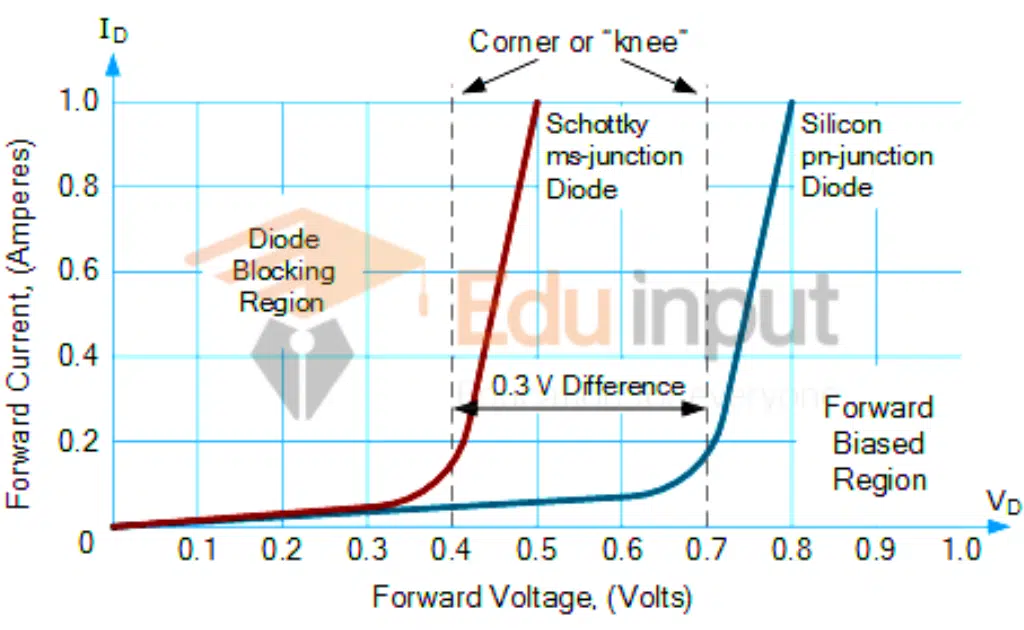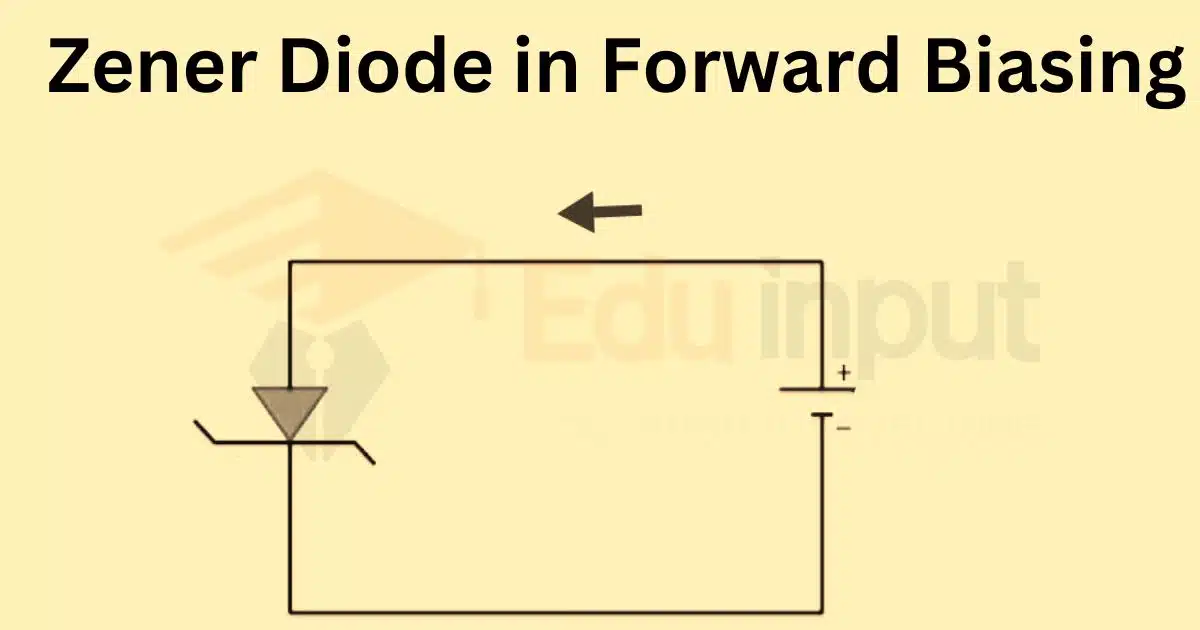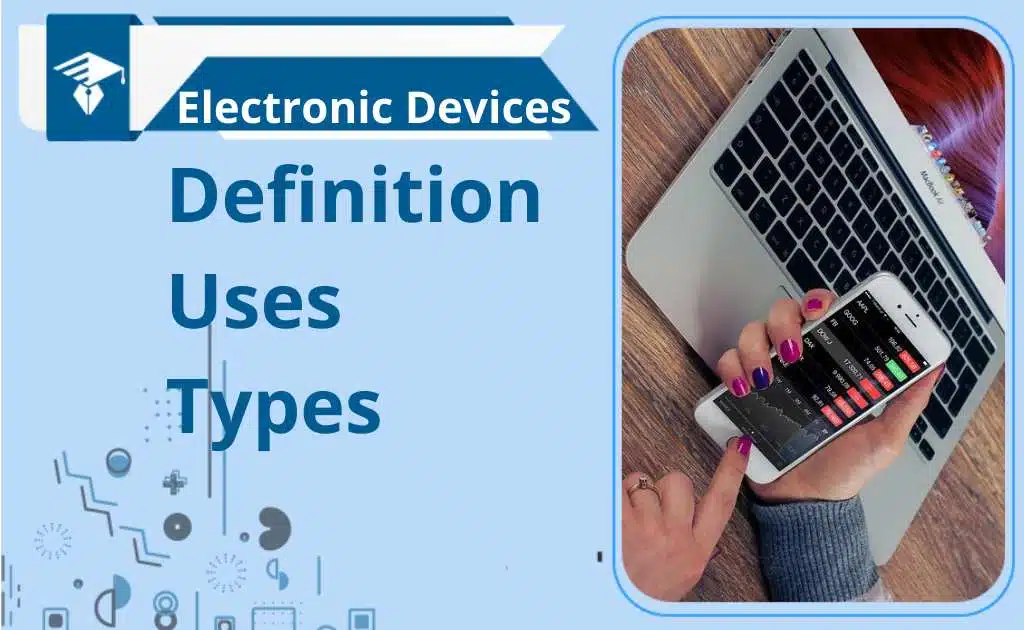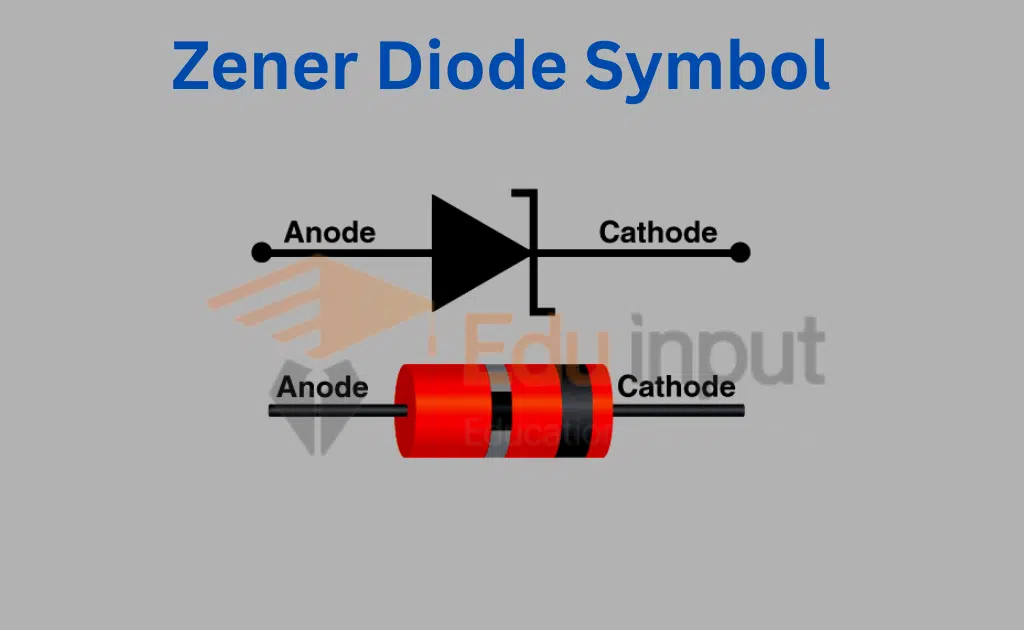Schottky Diode-Definition, Construction, and Applications
The Schottky Diode is a type of metal-semiconductor diode having a low forward voltage drop and a very fast switching speed.
Schottky Diode
A Schottky diode is a type of semiconductor diode that is characterized by its fast switching speed and low forward voltage drop. It is often used in high-frequency switching applications. The Schottky diode is made of a metal-semiconductor junction rather than a p-n junction, which is used in conventional diodes.
This unique junction structure gives it its distinct electrical characteristics and makes it suitable for high-frequency switching applications.
Schottky Diode Symbol
A Schottky diode is constructed with a lightly doped n-type silicon semiconductor and a metal electrode, forming a Metal-semiconductor junction.

Construction of Schottky Diode
Schottky diodes are formed by a junction between a metal and a semiconductor material, instead of two semiconductors as in conventional diodes. The metal used is typically molybdenum, platinum, chromium, tungsten, or silicides like palladium silicide and platinum silicide.
The semiconductor is usually n-type silicon. The metal acts as the anode and the semiconductor as the cathode. It allows electric current to flow from the metal to the semiconductor, but not in the reverse direction.
The choice of the metal and semiconductor determines the forward voltage drop of the diode. The usual forward voltage drop is between 0.15 and 0.45 V, but for p-type semiconductors, the forward voltage is much lower and the reverse leakage current increases, making it less useful. Refractory silicides, such as titanium silicide, can withstand high temperatures but this property can make them unsuitable for use in Schottky diodes. This is because their high-temperature tolerance can cause a low forward voltage, which is not desirable for the diode’s operation.
VI Characteristics of Schottky Diode
Schottky diodes are a type of rectifying diode with a lower knee voltage and faster switching speed compared to standard pn-junction diodes. The lower knee voltage allows for a larger forward current, resulting in lower power loss and making Schottky diodes a good choice for low-voltage and high-current applications such as solar panels.
The study investigated the behavior of a Schottky diode when the barrier heights were distributed according to a Gaussian distribution. The results showed that the diode behaved like a single diode, but with a lower zero-bias barrier height and a higher ideality factor. The temperature had an effect on the barrier height and ideality factor[1].
The distribution of barrier heights caused the decrease in barrier height. While electrical biases caused the higher ideality factor at low temperatures. Additionally, the study discussed the role of series resistance in the current-voltage relationship of the diode.

However, Schottky diodes also have a higher reverse leakage current compared to pn-junction diodes. If the I-V curve shows a linear, non-rectifying characteristic, it is an Ohmic contact, commonly used to connect semiconductors to external circuitry. Schottky diodes tend to be more expensive than standard pn-junction diodes with similar voltage and current specifications.
Applications of Schottky Diodes
These are some important applications of schottky diodes.
Voltage clamping: Schottky diodes are used in voltage clamping applications due to their low forward voltage drop, which ranges from 0.15 V to 0.46 V at forward biases of around 1 mA.
Reverse current and discharge protection: Schottky diodes are used to prevent reverse currents in photovoltaic systems, as well as to prevent batteries from discharging through the solar panels at night.
Switched-mode power supplies: Schottky diodes are used as rectifiers in switched-mode power supplies, due to their low forward voltage and fast recovery time, which leads to increased efficiency.
Sample-and-hold circuits: Schottky diodes can switch more quickly than regular diodes and result in a lower transition time and more accurate sample.
Charge control: Schottky diodes are used to control the charge in semiconductor nanostructures such as quantum wells or quantum dots due to their efficient electric field control.
Related FAQs
What is Schottky’s diode used for?
A Schottky diode is a type of semiconductor device that is used in a variety of applications. One of the most common uses for a Schottky diode is as a rectifier, which means it is used to convert alternating current (AC) to direct current (DC).
What semiconductor is used in a Schottky diode?
In a Schottky diode, a metal and a semiconductor are joined together to form a junction. This is different from conventional diodes, where two semiconductors are joined together. The semiconductor used in a Schottky diode is usually N-type silicon.
Why is Schottky’s diode faster?
Compared to a regular diode that typically has a voltage drop of 0.6 to 1.7 volts, a Schottky diode has a much lower voltage drop of usually between 0.15 and 0.45 volts. This means that the Schottky diode is more efficient and faster in switching because less energy is lost as heat. It makes it very useful in many electronic applications.







Leave a Reply